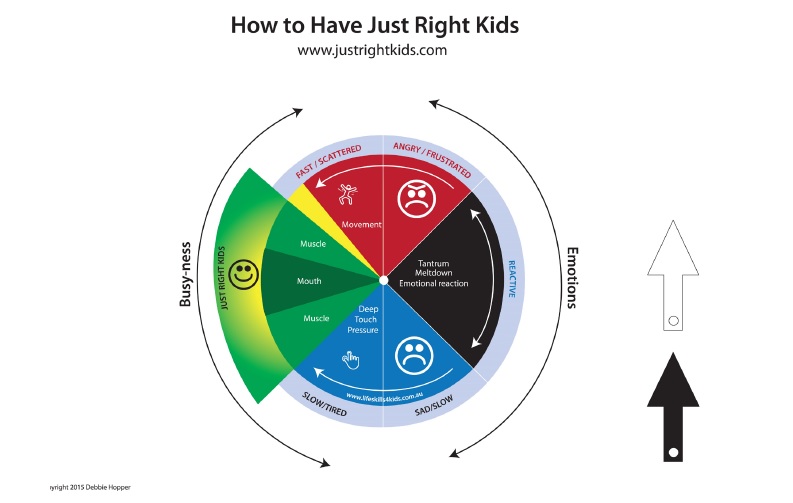Helping Hyperactive and Busy Kids
Written by Deb Hopper
Published in
Great Health Guide articles available in Audio:
Every child has a different base energy level and this can be impacted from day to day depending on how much sleep they had, what is happening at home or school or if their routine has been disrupted and if they are feeling anxious or worried about things. But some children are generally much busier at home and/or school than other children and when this starts to impact on what they need to do, it may start to be a concern for their learning or behavior. Many children who are hyperactive and busy, often don’t understand what it feels like in their body to be calm, relaxed or slowed down.
Here are 5 top tips for helping hyperactive and busy children:
1. Reflect back to children how busy you think they might be. Using words such as ‘fast’, ‘slow’ or ‘just right’ might be helpful in children to understand that their bodies do change. Many children who might be labelled as hyperactive or ‘fast’, often don’t know what it ‘feels like’ to be relaxed, slow or chilled out.
2. Using a visual such as the ‘Just Right Kids Technique’ model can be very helpful for teaching children about how hyperactive, or ‘fast’ they are going. This model shown below has been used successfully with many children to help them to understand the difference between when they are going fast, slow or just right, as well as teasing out how they feel – their emotional
side. Ask them how they are feeling, get them to move the arrow to the right colour or area for how they are feeling. This helps to connect and reinforce to them how they are feeling and makes this learning quicker.
3. If your child is struggling with being able to sit and concentrate and listen in class or for homework, encourage them to be involved in some movement and resistance (muscle) activities before school or homework times. Jump on the trampoline, bounce on a ball, walk or ride to school are great movement activities.
4. To help ground a child before learning activities, try some muscle or resistance activities. Resistance activities might include wall or floor push ups, walking out over a ball, pushing their hands together before starting work, or chair push-ups sitting in their seat.
5. For busy and hyperactive children, using a combination of movement and muscle activities (body or sensory based) AND thinking/cognitive strategies (such as the Just Right Kids Technique model) gives them the most control over their thoughts.
In addition, getting them to write a plan of attack such as a list of what homework needs to be done, breaking it down into a small section for each day’s homework that week, or creating a mind map helps them develop a plan, engages their frontal lobe (thinking part) of the brain and engages them in goal directed action that can help them to override the underlying ‘hyperactivity’ or difficulty in concentration.
So, next time your child is struggling with concentration, get them to:
1. stop
2. think – how fast is my body going (and look at the model)
3. think – what can I do to help my body get in the ‘just right’ zone
4. think – what is the plan or the steps for the plan
5. OK – let’s do it!
For more information on helping hyperactive or busy kids, you can click here for more info.
Are you looking for a way to help children reduce meltdowns?
Focus better in school?
Better understand their feelings, emotions and self-regulation?
If you are searching for the answer to these questions, you have found them in this book!
This book explains how the Just Right Kids Technique can help you to teach your child to understand, recognise and learn to control their emotions and behaviour.
Designed to fit into busy schedules, the concepts in the technique are easy to understand and the strategies can be implemented straight away. Through this fun, play-based approach to learning children will gain valuable life skills that will help them to feel ‘just right’ more of the time.




